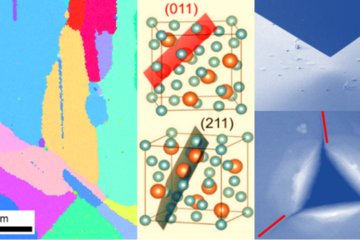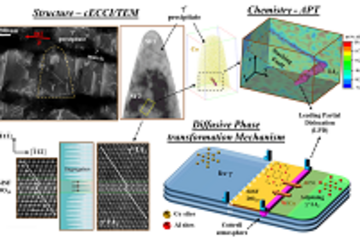All genres
21.
Talk
Mesoscale modelling of the influence of loading conditions on the dislocation mobility and creep process in single crystal Ni base superalloys. KTH Stockholm-Sweden, Stockholm, Sweden (2014)
22.
Talk
Scale-hoping approaches in desiging complex alloys. Royal Society International Seminar, Superalloys to Order' at the Kavli Royal Society International Centre, Chicheley, UK (2013)
23.
Talk
Investigations to understand the mechanisms during electropolishing of NiTi. 6th International Symposium on Electrochemical Micro & Nanosystem Technologies, Bonn, Germany (2006)
24.
Poster
Electropolishing of NiTi - Insight its mechanism. 58th Annual Meeting of the International Society of Electrochemistry, Banff, Canada (2007)
25.
Thesis - PhD
Investigations on the Mechanisms of Ductilization of Mg Alloys with Ca, Al and Zn. Dissertation, Ruhr-Universität Bochum (2020)
26.
Thesis - PhD
Ab initio based study of the thermodynamics of complex intermetallics. Dissertation, Ruhr-Universität Bochum (2020)
27.
Thesis - PhD
Ab initio based study of precipitate formation in advanced structural Al-based alloys. Dissertation, Ruhr-Universität Bochum (2019)
28.
Thesis - PhD
On the interfacial defect formation mechanism during laser additive manufac-turing of polycrystalline superalloys. Dissertation, Ruhr-Universität Bochum (2019)
29.
Thesis - PhD
Ab initio phase stabilities of Ce-based hard magnetic materials. Dissertation, Ruhr-Universität Bochum (2019)
30.
Thesis - PhD
On the interfacial defect formation mechanism during laser additive manufacturing of polycrystalline superalloys. Dissertation, Ruhr-Universität Bochum (2019)
31.
Thesis - PhD
Mechanical properties of the cubic and hexagonal NbCo2 Laves phases studied by micromechanical testing. Dissertation, Ruhr-Universität Bochum (2019)
32.
Thesis - PhD
Dislocation transmission through copper grain boundaries at the micron scale. Dissertation, Ruhr-Universität Bochum, Bochum, Germany (2017)
33.
Thesis - PhD
Elementary deformation processes during low temperature and high stress creep of Ni-base single crystal superalloys. Dissertation, Ruhr-University Bochum, Bochum, Germany (2016)
34.
Thesis - PhD
Nucleation of Mo-rich Laves phase particles in 12% Cr steels. Dissertation, Ruhr-Universität Bochum, Bochum, Germany (2014)
35.
Thesis - PhD
Multiscale description of super-saturated ferrite in severely deformed pearlitic wires. Dissertation, Ruhr-Universität Bochum, Bochum, Germany (2014)
36.
Thesis - PhD
Evolution of microstructure during long-term creep of a tempered martensite ferritic steel. Dissertation, Ruhr-University Bochum, Bochum (2009)
37.
Thesis - Master
Fügen von Stahl und Aluminium bei Raumtemperatur. Master, Fakultät Maschinenbau, Ruhr-Universität Bochum, Bochum, Germany (2014)











